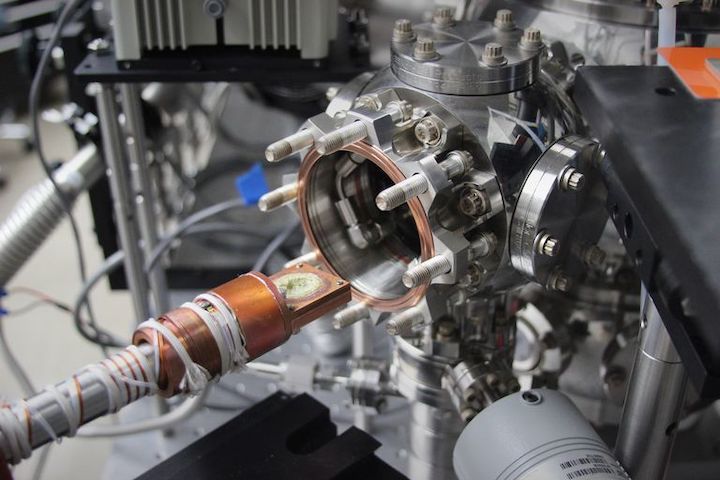15.06.2019

In the future, perhaps the rarest delicacy will be salt from another world. That's a possibility now that planetary scientists at Caltech and NASA's Jet Propulsion Laboratory (JPL) in Pasadena, California have announced their latest discovery: On the surface of Europa, one of Jupiter's moons, exists common table salt.
"The discovery suggests that the salty subsurface ocean of Europa may chemically resemble Earth's oceans more than previously thought, challenging decades of supposition about the composition of those waters," NASA says in a press release.
Properly known as sodium chloride, the compound is a crucial part of sea salt found commonly in the ocean. Sea salt also contains elements like calcium, potassium, and magnesium, but these usually consist of around 0.1 percent of the salt or less.
Scientists made the determination after studying research gained from both NASA's Voyagerand Galileo spacecrafts. As they looked through the data gained from their flybys of the moon, which was initially discovered by Italian astronomer Galileo Galilei in 1610, they discovered a yellow color visible on portions of the moon's surface.
The Galileo spacecraft, which launched in 1989 and entered Jupiter's orbit in 1995, carried with it a infrared spectrometer. The spacecraft discovered that the entire moon appears to be one giant ocean covered with an icy shell. From a geological perspective, the icy shell is still considered young. NASA thinks that means whatever is found within the shell is likely representative of what's below.
"People have traditionally assumed that all of the interesting spectroscopy is in the infrared on planetary surfaces, because that's where most of the molecules that scientists are looking for have their fundamental features," said Mike Brown, the Richard and Barbara Rosenberg Professor of Planetary Astronomy at Caltech and coauthor of the Science Advances paper describing the finding.
Using the spectrometer to break down the wavelengths of light hitting Europa, the spacecraft discovered water ice and a substance that seemed to be magnesium sulfate salts, similar to epsom salts used for healing purposes on Earth. But that turned out to be mistaken. Data later gleaned from the high-end W. M. Keck Observatory on the dormant volcano Maunakea in Hawaii showed that whatever was on Europa was missing key fingerprints found in magnesium.
NASA scientists began experiments to determine the yellow substance. JPL scientist Kevin Hand sent ocean salts through the ringer with Europa-like conditions, irradiating them to the point where they drastically changed. Their colors changed, for one thing. Sodium chloride, in particular, turned yellow.

"Sodium chloride is a bit like invisible ink on Europa's surface. Before irradiation you can't tell it's there, but after irradiation the color jumps right out at you," says Hand.
NASA then went to confirm Hand's finding directly at the source with the Hubble Space Telescope. In a region of the surface called Tara Regio, NASA was able to confirm the same yellow precisely matching the salt irradiated in Hand's lab.
"We've had the capacity to do this analysis with the Hubble Space Telescope for the past 20 years," Brown says. "It's just that nobody thought to look."
Like many discoveries about Europa, including the possibility of undersea geysers, the finding only raises more questions about the moon.
"Magnesium sulfate would simply have leached into the ocean from rocks on the ocean floor, but sodium chloride may indicate the ocean floor is hydrothermally active," says Caltech graduate student Samantha Trumbo, lead author of the paper. "That would mean Europa is a more geologically interesting planetary body than previously believed."
Quelle: PM
